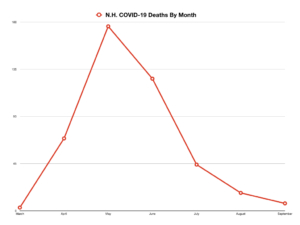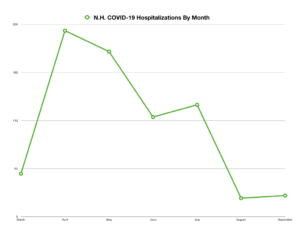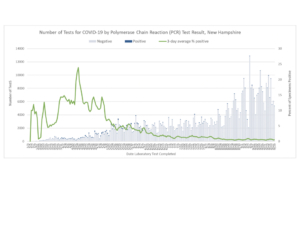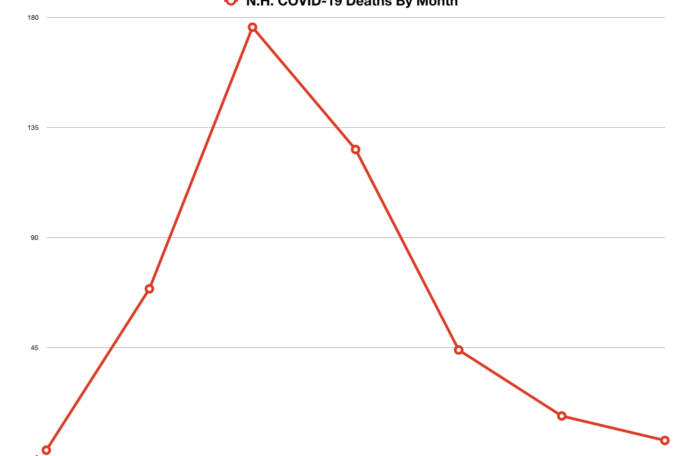N.H. COVID deaths fall by 96% through September, hitting lowest level since March
New Hampshire recorded only seven COVID-19 deaths in September, a 96% decline from May’s total of 176, and a 59% from August, state data show.
It was the third month in a row that deaths have fallen by more than 50%.
For the first time since March, when the state recorded three COVID-19 fatalities, deaths for the month stayed in the single digits. All deaths in September were of people over age 60.

New hospitalizations were almost flat, going from 21 in August to 24 in September. That is a 19% increase from month to month but represents an 81% decline since June’s peak of 121.

Positive test results rose from 692 in August to 991 in September, a 43% increase that is largely an artifact of increased testing. Without expanded testing, almost all of those infections likely would have gone undetected.

Excluding tests done at the University of New Hampshire, the state tested an average of 3,8242 people per day in September, a 27% increase from August.
But when UNH tests are included for the last week of September, the daily average jumps to 7,750, a roughly 156% increase from August.
Getting a precise daily average is challenging because the state only began including UNH’s numbers in its daily totals on Sept. 23. UNH reports that it has given 128,230 tests since July 29. Most of those came since late August when students returned to school, but the daily results are not listed with the state’s daily results to allow for precise calculation.
To illustrate the scale of UNH’s testing, the state recorded 90,208 tests in August and 115,280 in September, according to its published data. UNH’s 128,230 tests cover just three campuses, Durham, Manchester and UNH Law in Concord.
The bottom line is that through September the state has continued to have a very small number of COVID-19 hospitalizations and a pronounced drop in deaths despite the reopening of schools, colleges and businesses. The increase in positive test results has picked up some small clusters of cases, most notably at UNH, but has been driven largely by the substantial increase in testing.
Below is the state’s own chart tracking tests and positives, showing the rise in tests and the drop in the percent positive rate.




